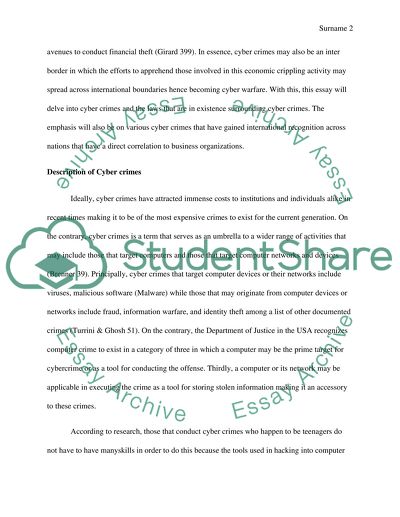Cite this document
(“Cyber Crimes Research Paper Example | Topics and Well Written Essays - 2500 words”, n.d.)
Retrieved from https://studentshare.org/law/1495471-cyber-crimes
Retrieved from https://studentshare.org/law/1495471-cyber-crimes
(Cyber Crimes Research Paper Example | Topics and Well Written Essays - 2500 Words)
https://studentshare.org/law/1495471-cyber-crimes.
https://studentshare.org/law/1495471-cyber-crimes.
“Cyber Crimes Research Paper Example | Topics and Well Written Essays - 2500 Words”, n.d. https://studentshare.org/law/1495471-cyber-crimes.


